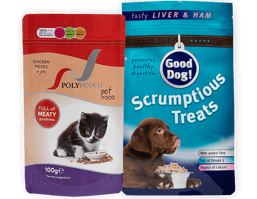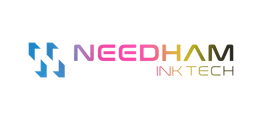Coding solutions that our customers can rely on is our goal. So, why don't we take a look at some of the industries that benefit from CIJ technology?
There are a number of factors driving the demand for manufacturers to invest in coding technology, including regulatory requirements, traceability needs, and the display of information. There is a range of technologies available for manufacturers to choose from, but here at Needham Ink Technologies, Continuous Inkjet (CIJ) Coding Printers are our speciality.
FOOD & BEVERAGE PACKAGING
.png?width=277&name=Untitled%20design%20(69).png) Ensuring the quality, safety and authenticity of food & beverage products are of critical importance to manufacturers - providing batch numbers, barcodes and relevant dates to product packaging enable them to quickly trace their products wherever they are in the world in the event of a recall, and help to protect supply chain integrity by quickly identifying whether a product is a real deal. Whether you're a multinational brand or a small and medium-sized manufacturer, being able to ensure your products are identifiable is crucial. Some more specific examples of coding applications within food & beverage packaging include:
Ensuring the quality, safety and authenticity of food & beverage products are of critical importance to manufacturers - providing batch numbers, barcodes and relevant dates to product packaging enable them to quickly trace their products wherever they are in the world in the event of a recall, and help to protect supply chain integrity by quickly identifying whether a product is a real deal. Whether you're a multinational brand or a small and medium-sized manufacturer, being able to ensure your products are identifiable is crucial. Some more specific examples of coding applications within food & beverage packaging include:
- Drinks bottles and cans
- Dairy bottles and cartons
- Retail Ready Packaging (RPP)
- Meat Packaging
- Ready Meals
WIRING/ CABLING
Extrusions are manufactured in all shapes, sizes and materials, and require various types of codes and marks that are essential for security and traceability. The cable and extrusion sector normally require sequential numbering or meter marking for cable and pipes. The print usually needs to be of good quality and semi-permanent or permanent. This requires high-speed printers that are capable of accurate meter marking and printing identification information onto the cable during the manufacturing process. Pipe extruding companies normally look for larger print heights that are preferably permanent.
ANIMAL FEED PACKAGING
 Similarly to food & beverage packaging, animal feed packaging requires accurate batch numbers, barcodes and quality marks to ensure quality and traceability. Companies producing pet food and animal feed are committed to offering products that ensure the health and vitality of family pets. The ability to integrate a high-speed coding printer into a production line will ensure that all necessary data can be rapidly printed directly onto packaging. Some examples include:
Similarly to food & beverage packaging, animal feed packaging requires accurate batch numbers, barcodes and quality marks to ensure quality and traceability. Companies producing pet food and animal feed are committed to offering products that ensure the health and vitality of family pets. The ability to integrate a high-speed coding printer into a production line will ensure that all necessary data can be rapidly printed directly onto packaging. Some examples include:
- Film packaging
- Trays and cups
- Cardboard
- Paper packaging
- Big bags/ Bulk packaging
Speciality inks such as thermochromic ink also allow printers to be able to apply 'warmed and ready to serve' indicators for pet foods.
PHARMACEUTICAL
The blister packets of pills that we see on a daily basis are all produced on high-speed production lines. Medicines and drugs must be identifiable and must meet regulatory requirements for unique labelling on both the boxes and capsules.
Inkjet printing solutions are particularly suitable for implementing requirements for the identification of medicines. Inkjet printing can be used to generate both characters and 2D barcodes at high print speed and quality and apply them to a variety of surfaces and materials. Even multi-line prints and the combination of characters and graphics can be realised without any problems.
CONSTRUCTION
.png?width=261&name=07%2008%202021%20(5).png) Construction settings are usually demanding and harsh, and inkjet printing onto substrates can vary considerably (from metal and plastic to glass and timber). In spite of this, their printing requirements have a lot in common. Not only must the code itself be durable and resistant, but in order to operate effectively in a busy construction environment, the coding machine must be durable, too.
Construction settings are usually demanding and harsh, and inkjet printing onto substrates can vary considerably (from metal and plastic to glass and timber). In spite of this, their printing requirements have a lot in common. Not only must the code itself be durable and resistant, but in order to operate effectively in a busy construction environment, the coding machine must be durable, too.
While either Thermal Inkjet (TIJ) or Continuous Inkjet (CIJ) would do the job, CIJ pips its counterpart to the post within construction settings. This is mainly due to its ability to print without needing to be very close to the surface of the item being printed onto. CIJ printers are generally cheaper to run when operating on large-scale workflows, due to the lower cost of consumables. CIJ printers are fairly heavy-duty and robust machines, whereas TIJ printers tend to be smaller, more compact and more fragile. On the flipside, CIJ printers typically have a longer downtime, so if you are operating on a smaller scale and can't afford for your production activity to be halted due to technical difficulties, TIJ might be a cheaper option.
